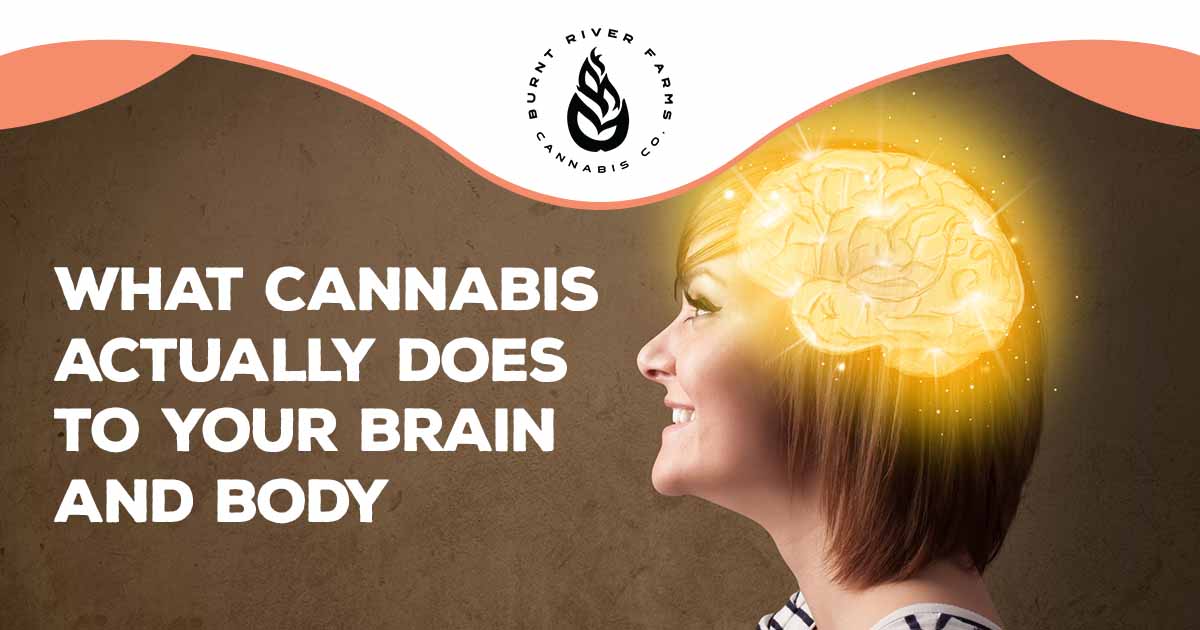What Cannabis Actually Does to Your Brain and Body

Cannabis is among the most popular drugs in the world. As it becomes legalized across the United States, it continues to gain in popularity. But how exactly does it interact with your mind and body? There’s a lot to this fascinating drug and how it interacts with the human body and how it impacts health. Understandably, there are also some concerns. Together we’ll review what we know about the effects cannabis so far.
Before we begin, it’s important to understand that there is still a significant lack of scientific research. While cannabis has been used for centuries both medically and recreationally, we’re still learning more about both the short term and long-term health effects. Unfortunately, since the Food and Drug Administration still classifies marijuana as a Schedule I drug, in order to study the effects of marijuana, researchers need a license from the Drug Enforcement Administration (DEA) in order to study it. Furthermore, the study must be approved by the FDA. And, in order to obtain research-grade cannabis, researchers would need to go through the National Institute on Drug Abuse. Even though it’s possible to research cannabis after jumping through these hoops, many hospitals, colleges, and other institutions still are hesitant. This is because it is still federally illegal to have cannabis, even if you’re in a state where it’s legalized. This means that any institutions receiving federal funding may lose their funding simply by conducting research on cannabis.
Despite the difficulty studying the effects of weed, we do still know some things about it.
It Can Make You “High”
Cannabis contains cannabinoids. A cannabinoid is a chemical compound that interacts with the receptors body’s endocannabinoid system to create various effects. The two most well-known cannabinoids are THC and CBD.
THC is psychoactive, where CBD is not. This means that one of the effects of THC is to create a euphoric “high” feeling for users. This is because THC also stimulates the part of the brain that responds to pleasure (including food and sex). This triggers the release of dopamine which causes the relaxed, euphoric sensations.
THC also very closely resembles anandamide, which is a cannabinoid naturally produced in the human brain. This natural cannabinoid helps regulate appetite, memory, mood, and sleep. This is why cannabis users report that THC often effects these same functions. For example, the “munchies” are a common side effect after smoking marijuana. This can be a great thing for individuals who are struggling with no appetite, such as cancer patients.
When it comes to memory, there is evidence to suggest that cannabis may play a significant role. If the user smoked weed, then they’ll generally feel the effects within a few minutes with a peak after about 30 minutes and the effects wearing off after a few hours. During this time, users may lose track of time, have difficulty concentrating, and have difficulty creating new memories. However, a 2012 study found that these immediate impairments aren’t likely to be permanent. Yet, heavy users may experience longer periods of impairment after they stop consuming cannabis.
Respiratory System
Depending on your method of consumption, using cannabis may irritate your lungs. This generally happens with marijuana smoke. Some heavy users may also experience increased respiratory infections such as bronchitis. However, there’s an obvious solution around this. Consumers can instead choose to consume cannabis in other ways other than smoked marijuana. For example, they can instead consume edibles or use oils.
Central Nervous System
In addition to creating a “high” feeling, there are other ways in which cannabis interacts with nervous systems. Early studies suggest that cannabis has medicinal purposes for a number of conditions. Some of the neurological benefits include pain relief, reduced inflammation, and seizure suppression.
The Connection Between Cannabis and the Endocannabinoid System
We already know that the cannabinoids in cannabis interact with the endocannabinoid system. But let’s take a deeper look at exactly how it all works. The ECS has two types of receptors, CB1 and CB2. Each of these receptors bind to different parts of the ECS, therefore affecting different systems.
CB1 Receptors
CB1 receptors are spread out all over the human body. However, they’re concentrated in the brain and spinal cord. More specifically, they’re found in the basal ganglia and hippocampus as well as the cerebellum and in reproductive organs. These areas of the brain process emotions, memories, and appetite.
There are no CB1 receptors in the medulla oblongata or the brain stem. These areas are responsible for both cardiovascular and respiratory function. The complete lack of CB1 receptors in these areas are a big part of why it’s not possible to overdose of THC, regardless of the amount consumed. There’s also a decreased chance of physical addiction because there are no CB1 receptors on the mesocorticolimbic pathway. Without a CB1 receptor in this area, it’s unlikely someone will suffer from physical addiction, though some people still experience psychological addiction, so it’s not without risk.
CB1 receptors are also found in nerve endings and throughout the central nervous system. This is where they help control the immune system, appetite, along with stress and anxiety levels. This is why many people use marijuana to reduce inflammation caused by the immune system, as well as increase appetite, and assist with lowering stress and anxiety.
Our current understanding of cannabinoids shows that THC is the one that interacts with CB1 receptors the most. This also explains the psychoactive effects of THC in comparison to other cannabinoids, as many of the CB1 receptors are in neurological areas of the body.
CB2 Receptors
CB2 receptors are primarily located in the immune system and the peripheral nervous system. They are found in the spleen, thymus gland, and in the tonsils. They work primarily as anti-inflammatory agents. As endocannabinoids and cannabinoids interact with CB2 receptors, they create a response that reduces inflammation which occurs because they are suppressing the immune system. While this may seem like a bad thing, for people suffering from autoimmune diseases it can be a blessing. That’s because autoimmune diseases occur when the body’s immune system attacks healthy cells.
The cannabinoid that interacts with CB2 receptors the most is CBD. The anti-inflammatory effect of CBD has played a significant role in developing treatments for autoimmune disorders and demyelinating disorders such as Parkinson’s disease and multiple sclerosis.
More Research is Needed
While strides have been made over the past several years to understand the effect of THC and CBD on the human mind and body, more research is needed. Even though some states have legalized medical marijuana and even recreational cannabis, we still have a distinct lack of research at the same time. To get a full understanding on the benefits of using cannabis for medical use we need more clinical trials to provide substantial evidence that the active ingredients in cannabis have more positives than negatives.
Many people feel that this is already true and actively use cannabis to treat a number of conditions. And, while any medication or drug may have potential side effects, there’s only limited evidence on how cannabis effects the body and mind long-term. Still, for many, cannabis works as a treatment that provides relief from symptoms of a variety of conditions and health issues.
It’s our hope that, in the future, scientists researching the short-term and long-term effects of marijuana are able to do so without the difficulties they face today.
